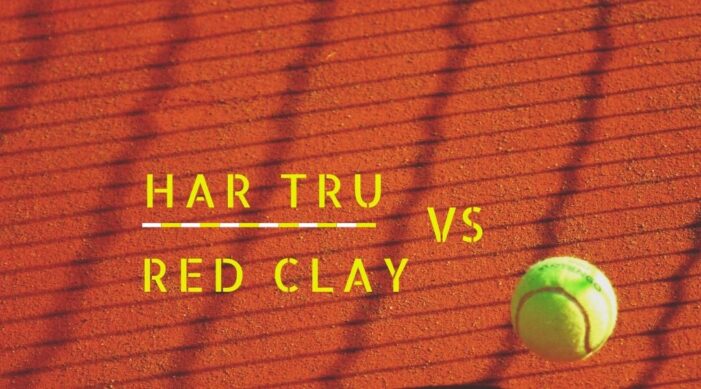When it comes to playing tennis, choosing the right court surface is essential. While there are several options available, two of the most popular are Har Tru and red clay courts. Both surfaces offer distinct advantages and disadvantages, and understanding these differences is crucial in determining which one is right for you.
In this article, we’ll take a closer look at Har Tru vs red clay courts, exploring the pros and cons of each surface and discussing how they impact the game of tennis.
Har Tru Courts: A Closer Look
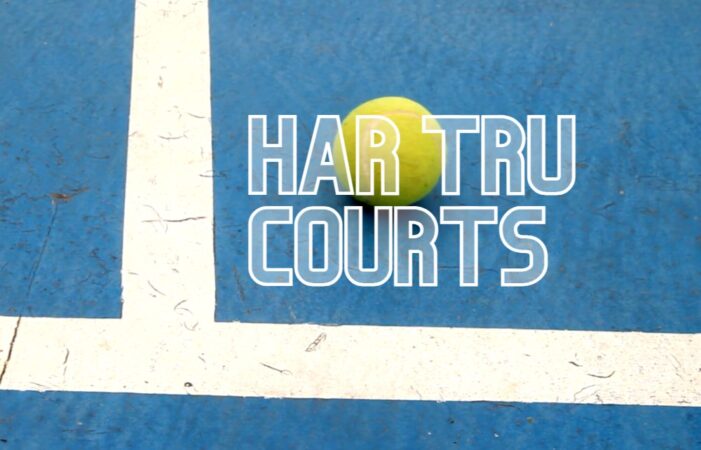
Har Tru is a brand name for a type of clay court surface. Made from crushed green stone, this court is softer and more forgiving than traditional red clay courts, which are made from crushed brick. It is also more consistent in terms of bounce and requires less maintenance than other clay surfaces, making it a popular choice for many tennis facilities.
Advantages of Har Tru Courts
One of the primary advantages of Har Tru courts is their consistency. Unlike traditional red clay courts, which can vary in terms of bounce and speed depending on factors such as weather conditions and maintenance, Har Tru courts maintain a consistent playing surface throughout the year.
This means that players can rely on consistent ball speed and bounce, which can be especially beneficial for developing muscle memory and improving technique.
Another advantage of these courts is their forgiving nature. The softer surface of Har Tru courts allows for more give upon impact, reducing the risk of injury and making it easier on players’ joints. This can be especially beneficial for older players or those with existing injuries.
Disadvantages of Har Tru Courts
One of the primary disadvantages of Har Tru courts is their cost. Due to the specialized nature of the surface, these courts can be more expensive to install and maintain than other surfaces, such as hard courts or traditional red clay courts.
Another potential disadvantage is their limited availability. While Har Tru is a popular surface in certain areas, it may be harder to find facilities that offer this type of court compared to other surfaces.
Red Clay Courts: A Closer Look
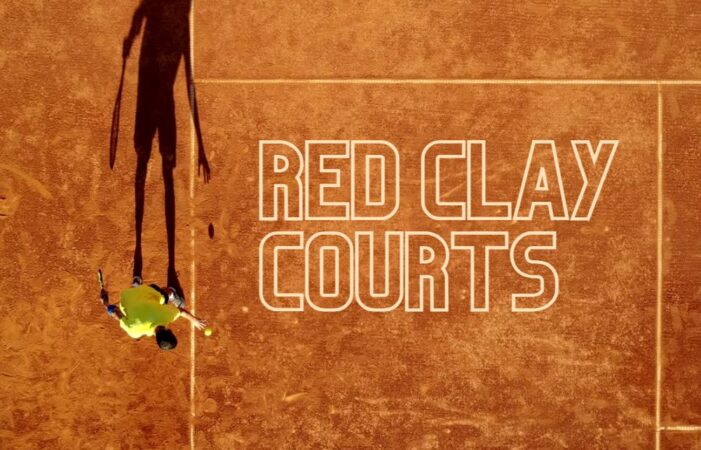
Red clay courts, also known as “European clay courts,” are the traditional surface used for many professional tennis tournaments, including the French Open. Made from crushed brick, red thee courts are softer than hard ones and offer a unique playing experience.
Advantages of Red Clay Courts
One of the primary advantages is their slow playing surface. Due to the softer nature of the clay, the ball tends to bounce higher and slower on red clay courts compared to hard courts, making it easier for players to control the ball and execute strategic shots.
Another advantage is their affordability. Unlike Har Tru courts, which can be expensive to install and maintain, red clay ones are often a more affordable option.
Disadvantages of Red Clay Courts
One of the primary disadvantages of red clay courts is their inconsistency. Due to the natural nature of the surface, they can vary in terms of bounce and speed depending on weather conditions and maintenance. This can make it difficult for players to develop consistent technique and muscle memory.
Another potential disadvantage is their impact on player health. The softer surface of these courts can lead to more slipping and sliding, increasing the risk of injury. Additionally, the fine dust created by the crushed brick surface can cause respiratory issues, particularly for players with allergies or asthma.
Choosing the Right Surface for You
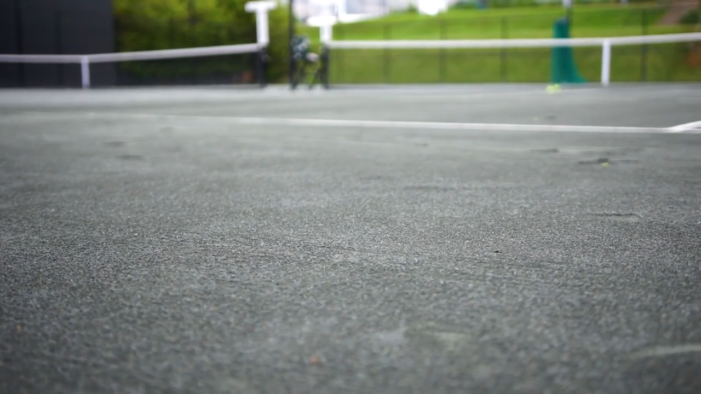
When deciding between Har Tru vs red clay courts, there are several factors to consider. First and foremost, consider your playing style and skill level. If you’re a beginner or intermediate player, you may benefit from the consistency and forgiving nature of Har Tru courts.
On the other hand, if you’re an advanced player who values the slow playing surface and unique challenges of red clay courts, this may be the right choice for you.
Another factor to consider is availability. While both surfaces are popular in certain areas, Har Tru courts may be more difficult to find in some regions, so you may need to be flexible in your choice of court surface based on the available options in your area.
Cost is another consideration. While red clay courts are generally more affordable than Har Tru counterparts, the cost of installation and maintenance can vary depending on location, climate, and other factors. Be sure to research and compare costs for both surfaces before making a decision.
Finally, consider any potential health concerns related to the surface. If you have joint issues or a history of injuries, Har Tru courts may be a better choice due to their forgiving nature. On the other hand, if you have respiratory issues or allergies, you may want to avoid red clay courts due to the dust they can create.
Frequently Asked Questions
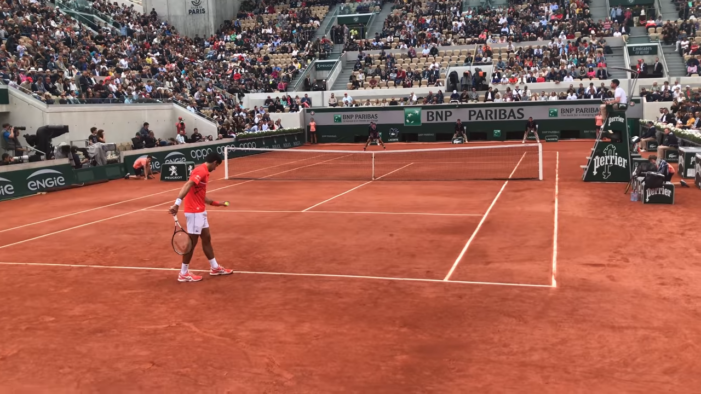
1. What is the main difference between Har Tru and red clay courts?
The main difference between Har Tru and red clay courts is the materials used to create the surface. Har Tru is made from crushed green stone, while red clay courts are made from crushed brick. Har Tru courts are also more forgiving and consistent in terms of bounce, while red clay courts offer a slower playing surface and a unique set of challenges.
2. Which court surface is better for beginners?
Har Tru courts are generally better for beginners due to their forgiving nature and consistent playing surface. This can help players develop their technique and muscle memory more easily.
3. Which court surface is better for advanced players?
The choice of court surface for advanced players depends on personal preference and playing style. Some advanced players prefer the slower playing surface and unique challenges of red clay courts, while others prefer the consistency and forgiving nature of Har Tru courts.
4. Are Har Tru courts more expensive than red clay courts?
Har Tru courts can be more expensive to install and maintain than red clay courts due to the specialized materials used to create the surface. However, the cost can vary depending on location, climate, and other factors.
5. Can playing on red clay courts cause respiratory issues?
The fine dust created by the crushed brick surface of red clay courts can cause respiratory issues for some players, particularly those with allergies or asthma.
6. Are Har Tru courts more widely available than red clay courts?
Har Tru courts may be less widely available than other court surfaces, including red clay courts. However, their popularity has been growing in recent years, and they can be found at many tennis facilities across the country.
Final Words
Both types of courts offer distinct advantages and disadvantages for tennis players. Har Tru courts are consistent and forgiving, while red clay courts offer a unique playing experience and affordability.
When choosing between the two surfaces, it’s important to consider factors such as playing style, availability, cost, and health concerns to determine which one is the best fit for you. Ultimately, the right court surface can enhance your game and help you reach your full potential as a tennis player.

